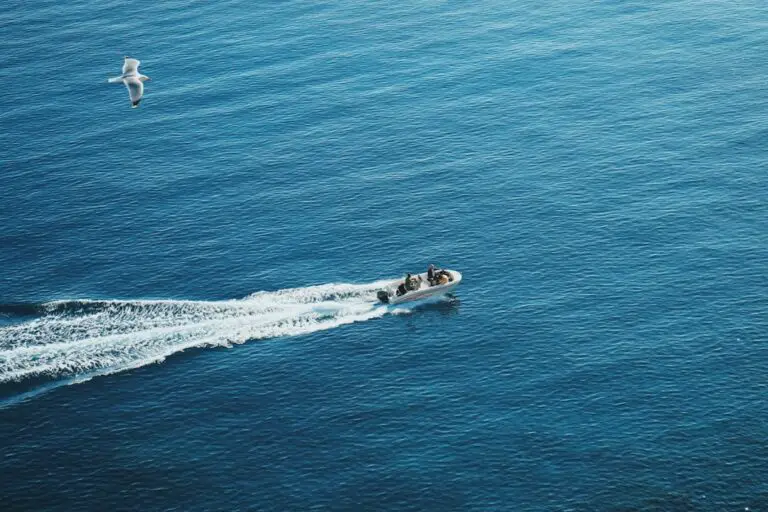Support our hydrofoil educational content for free when you purchase through links on our site. Learn more
Unlocking the Secrets of Hydrofoil Physics: 12 Fascinating Insights for 2024! 🌊
Have you ever watched a hydrofoil glide effortlessly above the water’s surface and wondered how it defies gravity? The physics behind hydrofoiling is not just a captivating spectacle; it’s a blend of science, engineering, and a sprinkle of magic that allows riders to soar above the waves. In this article, we’ll dive deep into the 12 essential insights that will elevate your understanding of hydrofoil physics, from the mechanics of lift to the latest innovations in hydrofoil design.
Picture this: you’re out on the water, the sun is shining, and you’re gliding above the waves on your hydrofoil, feeling the thrill of speed and freedom. But what makes this exhilarating experience possible? It all boils down to the fascinating principles of fluid dynamics and lift generation. As we explore these concepts, you’ll discover how the right hydrofoil can transform your ride and what to look for when choosing your gear.
So, are you ready to unlock the secrets of hydrofoil physics? Let’s dive in!
Key Takeaways
- Hydrofoils generate lift by creating a pressure difference between the top and bottom surfaces, similar to airplane wings.
- Fluid dynamics plays a crucial role in hydrofoiling, affecting how water flows around the foil.
- Different hydrofoil designs cater to various water sports, including kite-foiling and wake-foiling, each with unique performance characteristics.
- Safety is paramount: Always wear protective gear and check conditions before heading out.
- Investing in quality gear can significantly enhance your hydrofoiling experience. Check out our recommended brands like Naish and Lift Foils.
Ready to elevate your ride? Explore our Hydrofoil Equipment Reviews for the best gear on the market! 🌟
Table of Contents
- Quick Tips and Facts about Hydrofoil Physics
- Understanding Hydrofoil Mechanics: The Science Behind Lift
- The Role of Fluid Dynamics in Hydrofoiling
- Key Principles of Hydrofoil Design and Performance
- How Hydrofoils Create Lift: A Deep Dive into Physics
- Comparing Hydrofoil Types: Which One is Right for You?
- The Evolution of Hydrofoiling: From Concept to Sport
- Hydrofoil Applications Beyond Surfing: Exploring New Frontiers
- Safety Tips and Best Practices for Hydrofoiling
- Conclusion
- Recommended Links
- FAQ
- Reference Links
Quick Tips and Facts about Hydrofoil Physics 🌊
Hydrofoil physics is a fascinating topic that combines fluid dynamics, aerodynamics, and materials science. Here are some quick tips and facts to get you started:
- Hydrofoils work on the principle of lift: Just like an airplane wing, a hydrofoil creates lift by deflecting the flow of water downward, resulting in higher pressure on the bottom of the foil and lower pressure on the top.
- Bernoulli’s principle is key: The shape of the hydrofoil creates a pressure difference between the top and bottom surfaces, which generates lift.
- Fluid properties matter: The density, viscosity, and compressibility of the fluid (water) affect the performance of the hydrofoil.
- Turbulence is a challenge: Chaotic fluid motion can significantly increase drag and affect lift.
- Surface tension is important: The force that holds a liquid’s surface together influences the behavior of droplets and waves.
Understanding Hydrofoil Mechanics: The Science Behind Lift 🚀
Hydrofoil mechanics is a complex topic that involves the study of fluid dynamics, materials science, and aerodynamics. Here are some key concepts to understand:
- Lift: The upward force exerted on the hydrofoil by the fluid (water).
- Drag: The resistance to motion caused by friction between the hydrofoil and water.
- Buoyancy: The upward force exerted by the water on the hydrofoil, counteracting gravity.
- Boundary layer: The thin layer of fluid adjacent to the hydrofoil surface, where friction is highest.
The Role of Fluid Dynamics in Hydrofoiling 🌊
Fluid dynamics plays a crucial role in hydrofoiling, as it determines the behavior of the fluid (water) around the hydrofoil. Here are some key concepts to understand:
- Fluid properties: Density, viscosity, and compressibility affect the performance of the hydrofoil.
- Flow regimes: Laminar, turbulent, and transitional flows affect the behavior of the fluid around the hydrofoil.
- Boundary layer: The thin layer of fluid adjacent to the hydrofoil surface, where friction is highest.
Key Principles of Hydrofoil Design and Performance 📈
Hydrofoil design and performance are critical to achieving optimal performance. Here are some key principles to understand:
- Foil shape: The shape of the hydrofoil determines the lift and drag characteristics.
- Foil size: The size of the hydrofoil affects the lift and drag characteristics.
- Mast length: The length of the mast affects the stability and maneuverability of the hydrofoil.
- Foil wing span: The width of the foil affects the stability and maneuverability of the hydrofoil.
How Hydrofoils Create Lift: A Deep Dive into Physics 🤔
Hydrofoils create lift by deflecting the flow of water downward, resulting in higher pressure on the bottom of the foil and lower pressure on the top. Here’s a step-by-step explanation:
- Water flows over the hydrofoil: The fluid (water) flows over the hydrofoil, creating a pressure difference between the top and bottom surfaces.
- Pressure difference creates lift: The pressure difference between the top and bottom surfaces creates an upward force, known as lift.
- Lift counteracts weight: The lift force counteracts the weight of the hydrofoil, allowing it to rise above the water surface.
Comparing Hydrofoil Types: Which One is Right for You? 🤔
There are several types of hydrofoils available, each with its own unique characteristics and advantages. Here’s a comparison of some popular types:
- Surface-piercing: V-shaped foils that partially rise above the water surface.
- Fully submerged: Inverted T-shaped foils that remain entirely submerged.
- Kite-foiling: Using a kite to power the hydrofoil.
- Wake-foiling: Being towed by a boat or personal watercraft.
The Evolution of Hydrofoiling: From Concept to Sport 🏊♂️
Hydrofoiling has come a long way since its inception in the late 19th century. Here’s a brief history:
- Early hydrofoils: Developed in the late 19th century, early hydrofoils were used for military and commercial applications.
- Modern hydrofoils: In the mid-20th century, modern hydrofoils were developed for recreational use.
- Hydrofoil sports: Hydrofoiling has become a popular sport, with various disciplines such as kite-foiling, wake-foiling, and wing-foiling.
Hydrofoil Applications Beyond Surfing: Exploring New Frontiers 🚀
Hydrofoils have applications beyond surfing, including:
- Military: Hydrofoils have been used for military applications, such as patrol boats and fast attack craft.
- Commercial: Hydrofoils have been used for commercial applications, such as ferries and cargo ships.
- Recreational: Hydrofoils have become a popular recreational activity, with various disciplines such as kite-foiling, wake-foiling, and wing-foiling.
Safety Tips and Best Practices for Hydrofoiling 🚨
Hydrofoiling can be a safe and enjoyable activity if you follow some basic safety tips and best practices:
- Wear protective gear: Wear a helmet, wetsuit, and boots to protect yourself from injury.
- Check the weather: Check the weather forecast before heading out to ensure safe conditions.
- Respect the environment: Respect the environment and other water users.
Internal link to Hydrofoil Basics
Internal link to Hydrofoil Equipment Reviews
Internal link to Advanced Hydrofoiling Techniques
Internal link to Hydrofoil History
Internal link to Hydrofoil Innovations
Conclusion 🎉

In summary, hydrofoil physics is a captivating blend of fluid dynamics, lift generation, and innovative design. Whether you’re gliding above the waves or exploring the latest hydrofoil technologies, understanding the underlying principles can enhance your experience and performance.
Positives and Negatives of Hydrofoils
Positives:
- Increased Speed: Hydrofoils significantly reduce drag, allowing for faster speeds on the water.
- Enhanced Stability: Once up on the foil, riders experience a smoother ride, even in choppy conditions.
- Versatility: Hydrofoils can be used in various water sports, including kite-foiling, wake-foiling, and windsurfing.
Negatives:
- Learning Curve: Mastering hydrofoiling can be challenging for beginners and may require lessons.
- Equipment Costs: Quality hydrofoil setups can be pricey, making it a significant investment for newcomers.
- Maintenance: Hydrofoils require regular maintenance to ensure optimal performance and safety.
Overall, we confidently recommend hydrofoiling as an exhilarating and rewarding water sport. If you’re ready to elevate your ride, dive into the world of hydrofoiling!
Recommended Links 🛒
-
👉 Shop Hydrofoil Equipment on:
- Naish: Naish Official Website
- Slingshot: Slingshot Official Website
- Lift Foils: Lift Foils Official Website
- Amazon Hydrofoil Gear: Amazon Hydrofoil Gear
-
Books on Hydrofoiling:
FAQ ❓

What is a hydrofoil in physics?
A hydrofoil is a lifting surface (foil) that operates in water, similar to an airplane wing. As a hydrofoil craft gains speed, the hydrofoils lift the craft’s hull out of the water, decreasing drag and allowing for greater speeds. This lift is generated by the difference in pressure created by the shape of the hydrofoil.
What is the principle of hydrofoil?
The principle of hydrofoil relies on Bernoulli’s principle, which states that an increase in the speed of a fluid occurs simultaneously with a decrease in pressure. When water flows over the hydrofoil, the shape of the foil causes the water to move faster over the top surface than the bottom, creating lift.
Read more about “How Does a Hydrofoil Work? 12 Fascinating Insights to Elevate Your Ride! 🌊”
What is the physics of the water foil?
The physics of a water foil involves understanding fluid dynamics, specifically how water behaves when it flows over the foil. Key concepts include lift, drag, buoyancy, and the boundary layer, which all play critical roles in the hydrofoil’s performance.
Read more about “Hydrofoil Race Boats: 7 Reasons Why They’re the Future of Water Sports 🚀”
What is the physics of pump foiling?
Pump foiling, or pumping, refers to the technique of using body movements to generate lift without the need for a continuous power source, such as a kite or a boat. The rider shifts their weight and uses their legs to create a pumping motion, which helps the hydrofoil generate lift and maintain speed.
Read more about “What is the Point of a Hydrofoil Surfboard? 7 Reasons You Need to Know … 🏄♂️✨”
How does hydrofoil design affect performance?
Hydrofoil design significantly impacts performance through factors such as foil shape, size, and aspect ratio. A well-designed hydrofoil can optimize lift and minimize drag, allowing for better speed and stability on the water.
What are the safety precautions for hydrofoiling?
Safety precautions include wearing a helmet, life jacket, and wetsuit, checking weather conditions, and ensuring your equipment is in good condition. It’s also essential to practice in safe environments and consider taking lessons from experienced instructors.
Read more about “How Hard Is It to Ride a Hydrofoil? 10 Essential Insights … 🏄♂️”
Reference Links 🔗
With these insights, you’re now equipped to dive deeper into the world of hydrofoiling! Whether you’re a seasoned pro or just starting, understanding the physics behind it will undoubtedly enhance your experience. Happy foiling! 🌊🏄♂️

